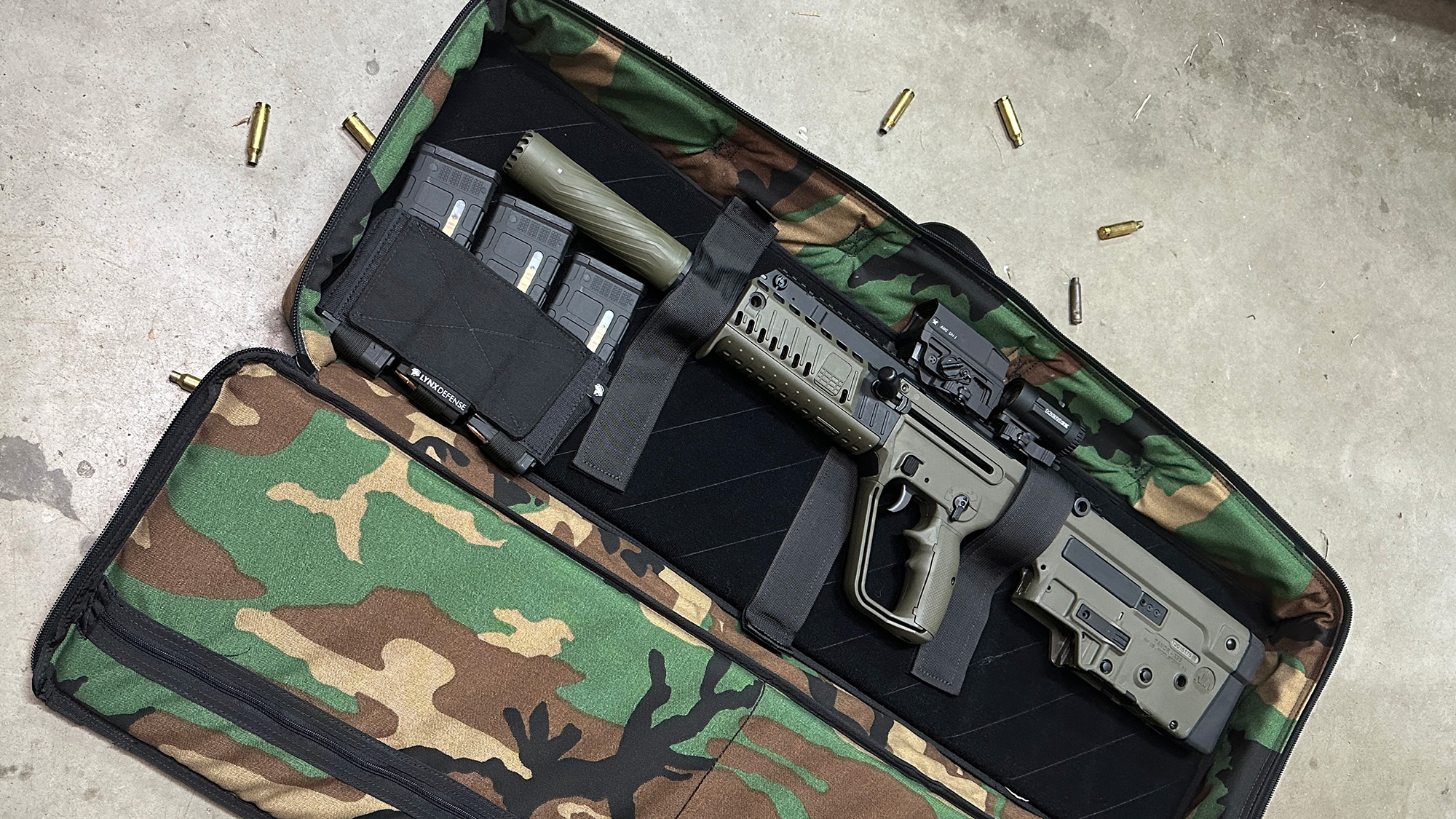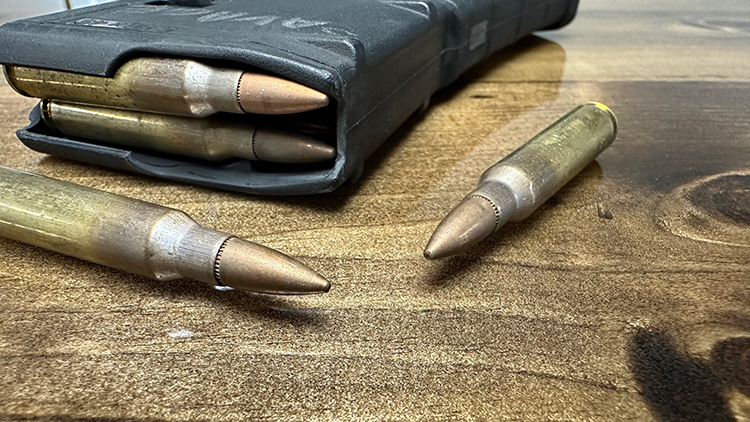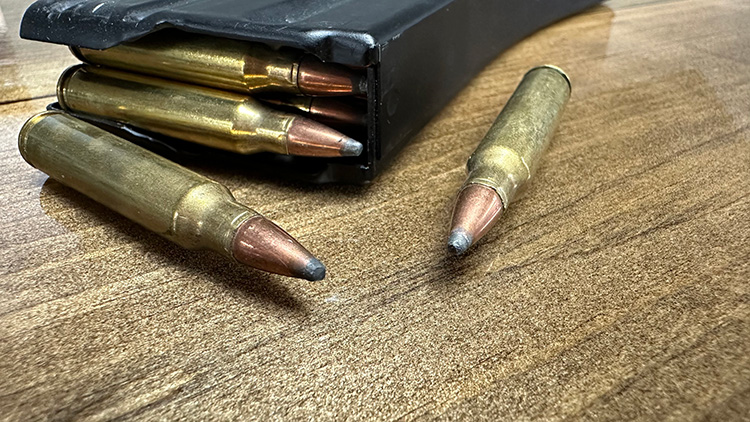
Ready to see what we have coming?
Lynx Defense will release some new things soon. Let us deliver them right to your inbox!

Lynx Defense will release some new things soon. Let us deliver them right to your inbox!
We may earn revenue from product links on this page and participate in affiliate programs. Learn More ›

Are you on the hunt to get the best AR-15 ammo? You might be a little overwhelmed by all the terminology and why there are so many options, but have no fear. I will help you break down all the essential information when buying ammo.
I will cover everything, from plinking/range ammo to defensive ammo you want to keep in your SHTF gun.
If you are in a hurry, that’s okay. We will give you the quick and dirty list right now. For those of you who want to learn about it before you buy, skip the list and read on! (You can come back to the list later to see the best places to buy ammo online.)
Here is a solid list of good range, target, and some good defensive ammo and where you can pick them up online.
Knowing a bullet nomenclature is essential if you are new to guns and are trying to learn as much as you can right now. There are several different types and kinds of bullets but for this article we are just going to be looking at the 5.56/.223 rounds that the AR-15 shoots.
The 5.56 round is made up of 4 components:
Without these four things, you don’t have a bullet. The primer is the circle at the end of the casing that the firing pin of the gun strikes to ignite the power held in the casing that makes the bullet shoot down the barrel and to the target.
Here is an exploded view of a real round
The casing is the body of the round that holds the primer, powder charge, and bullet itself.
Casings are usually made of brass but can also be made from steel. These two casings will look very different and are hard to miss.
Brass is a softer metal with less wear and tear on the AR-15’s chamber and extractor than the steel-cased rounds.
In years past, there was a price advantage to steal cased rounds that no longer exist today, making buying anything other than brass in 5.56mm pointless.
It was easy to calculate the money saved on shooting steel-cased ammo through your AR-15 and just changing the parts as they wore out. But now, with more expensive AR-15 parts and high-priced steel case rounds, it’s smarter to stick with the standard brass casing.
The powder is what reloaders and ballistic nerds salivate over.
But for the average shooter, you really need to know that the 5.56 uses smokeless gunpowder. (which is a misnomer)
While it’s not truly smokeless, it produces less smoke and less fouling when fired than black powder.
You’ll want to become extremely familiar with grain weight, as this is what people will refer to often when talking about all the different types of 5.56 rounds.
The most common of the group is the 55 grain, which will come in multiple options, including full metal jacket(FMJ), hollow point(HP), and others.
Hands down, you will see 55-grain 5.56 rounds for AR-15s everywhere. They are more common on the civilian market than any other type of rifle ammo besides .22LR.
One of the most common types of 62-grain 5.56 ammo is the M855, also known as SS109 in some non-U.S. military services.
This round features a steel penetrator tip over a lead core, encased in a full metal jacket. It was designed to improve penetration against modern body armor compared to the older M193 round (55-grain).
The M855/SS109 round has been somewhat controversial, particularly in the United States.
Its penetrator tip led to debates about its classification as an armor-piercing round, which would affect its legality for civilian use under U.S. law.
However, due to its design and intended use, the ATF generally does not classify it as an armor-piercing round.
72-grain 5.56 ammunition is a relatively less common but specialized type of cartridge designed for the 5.56x45mm NATO round.
This heavier bullet weight offers specific characteristics and advantages.
Heavier bullets such as the 72-grain tend to have a better ballistic coefficient, meaning they are more aerodynamic and maintain velocity better over longer distances.
This translates to less wind drift and drop, making them suitable for long-range shooting.
The 80 grain is even far less common and is really only found around the reloading crowd. You can find it from the factory but it’s very uncommon.
Each bullet has its own properties and purposes, and they typically are designed around aerodynamics in flight and what they do upon impacting the target.

The most common type features a soft core (usually lead) encased in a shell of harder metal. It’s used primarily for training and target shooting.
You can find nearly every grain weight in FMJ and these will be your go-to bullet for range shooting and plinking.
Designed to expand upon impact, increasing the bullet’s diameter to cause more significant damage to the target. It is commonly used in hunting and some tactical applications.
This is usually where defensive ammo comes in, and people recommend Hollow Point for his devastating mushroom effect upon impact.

These bullets have an exposed lead tip that allows for controlled expansion upon impact, making them suitable for hunting and some tactical uses.
I was issued these for years in law enforcement for the controlled expansion and the hope that missed shots would have less over-penetration.
Like hollow points, ballistic tip bullets are designed for controlled expansion and are often used in hunting. They feature a plastic tip that improves aerodynamics for better accuracy.
These bullets have a hardened steel or tungsten core designed to penetrate armor. They are typically used by military and law enforcement in specific tactical situations.
To clear the air, green tip M855 or XM855 is not armor piercing.
Tracer rounds are designed to be visible in flight, allowing shooters to see the bullet’s trajectory. They’re used for signaling, target designation, and adjusting fire in low visibility conditions.
They are also notoriously hard on your barrel and rifling, so shooting tracer rounds should be done as little as possible.
Made from compressed powder or other materials that disintegrate upon impact, frangible bullets are used for close-quarter battle training and shooting steel targets to minimize the risk of ricochet.
These are well-liked training rounds because you can “safely” shoot them at steel targets at close range.
These are high-precision bullets designed for competitive shooting. They are manufactured to extremely tight tolerances for consistent performance and enhanced accuracy.
These rounds can be VERY expensive and if you aren’t looking for insane accuracy and shooting from a bench rest you really don’t have a need or Match grade ammo.
We dedicated an entire article to the comparison of 5.56 and .223 Remington, but its long and short boils down to powder charge and the pressure of each round.
The best ammo for an AR-15 depends on what your goal is with the AR-15.
For range shooting the 115 FMJ will be the go-to for budget reasons. You’ll want to go with a soft tip or hollow point round for defense.
It depends on which tolerance your gun’s chamber is rated for. The 5.56 has slightly higher pressures than the .223 Remington.
You can learn more about it in our 5.56 vs .223 Remington comparison.
This largely depends on your intended use of the AR. If you want a good CQB with more takedown and mass behind the round, 300 Blackout is a great round to use.
If you want distance with good terminal ballistics, the 5.56 round is a world favorite.
That probably depends on the agency and what they have and purchase in quantity.
As a former cop, my advice on choosing calibers is I wouldn’t base my caliber decisions on what law enforcement uses. They often have budget constraints and decisions related to firearms and calibers are often made by non-gun people.
Concealed Carry Insurance
Protect yourself and all those who carry concealed in your house.